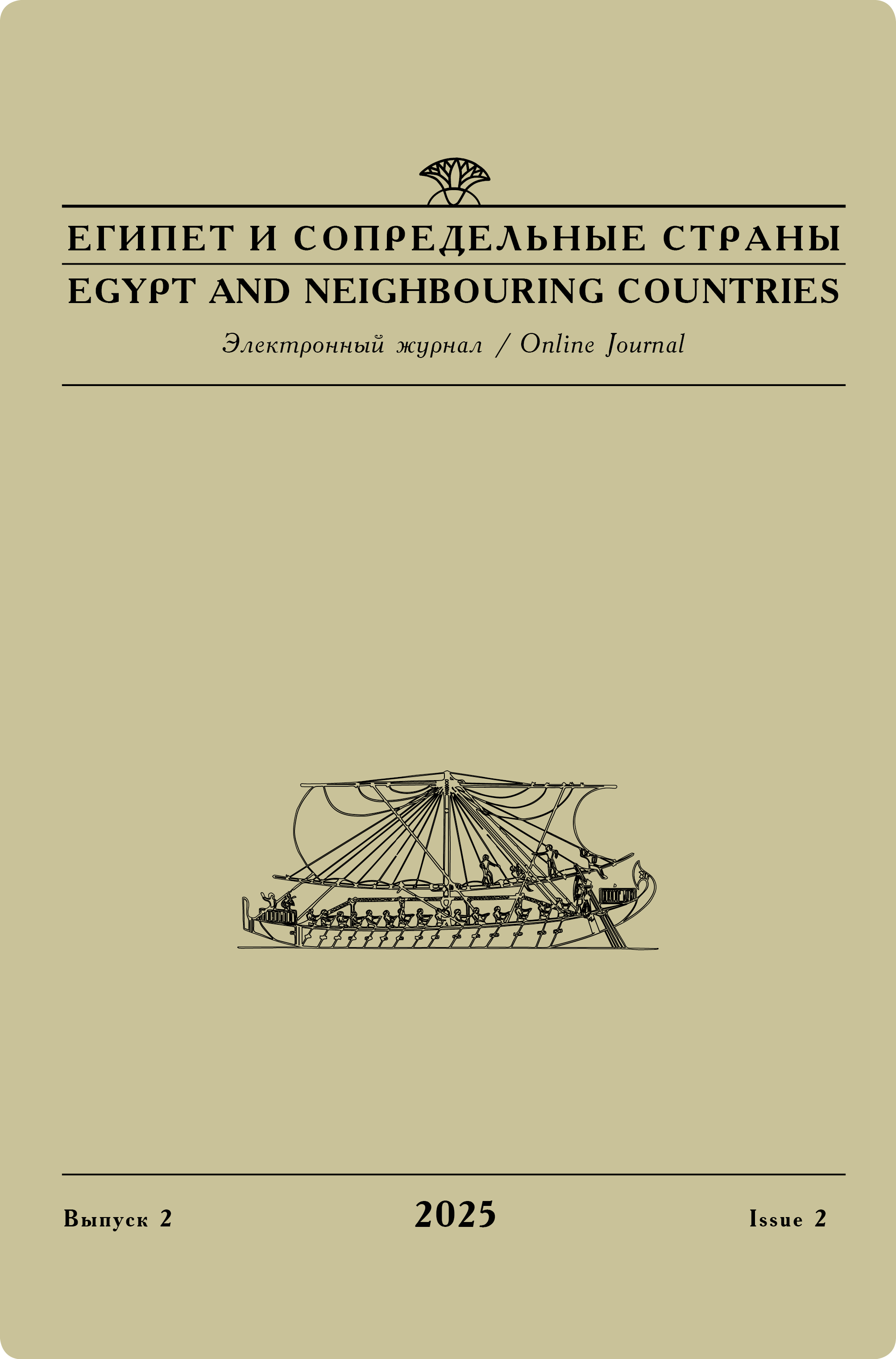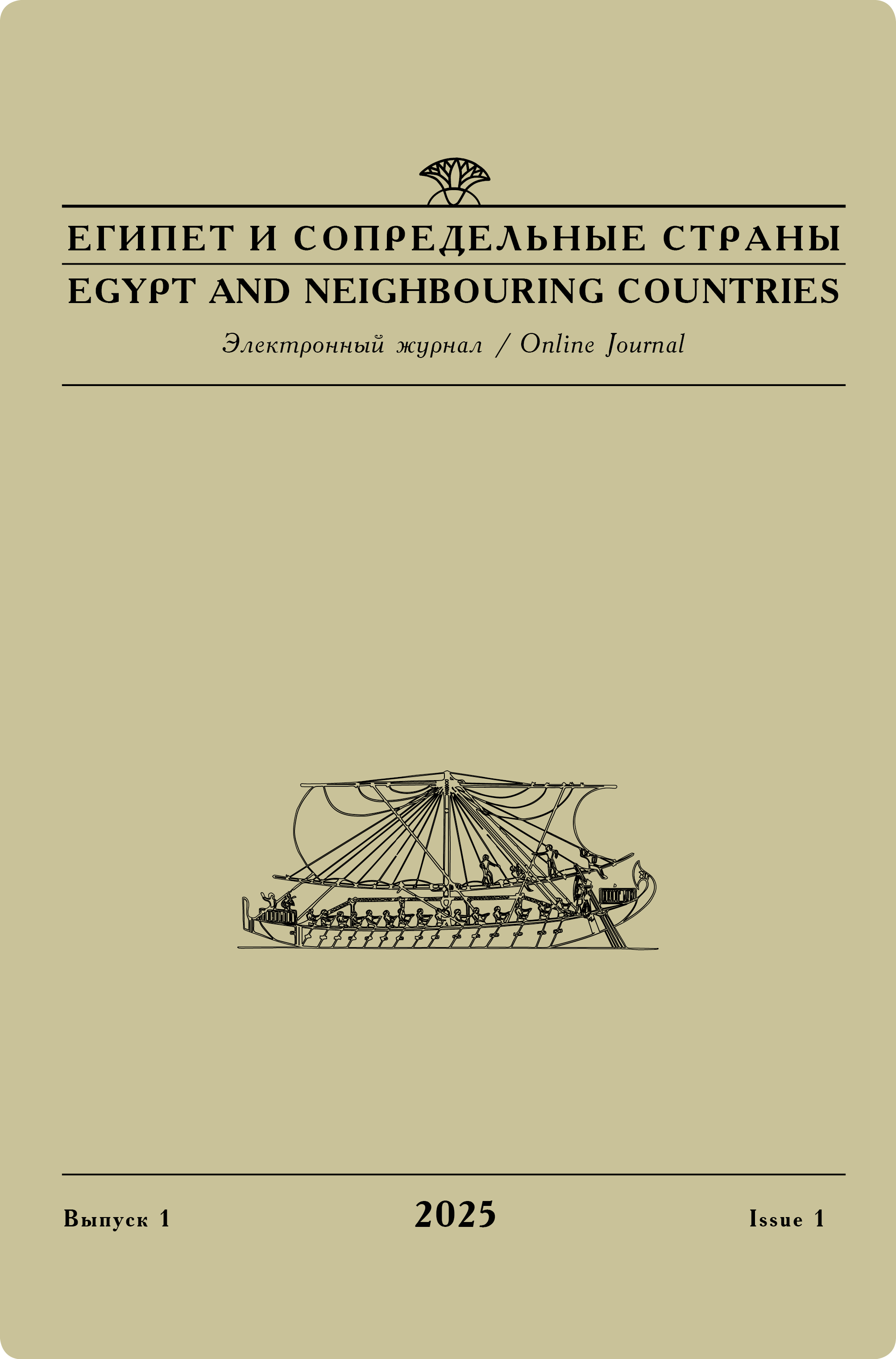Issue 4, 2021
G. A. Belova
Arkheologicheskie issledovaniia pamiatnika "dvorets Apriia" (Memfis) i problemy ego khronologii i identifikatsii [Archaeological research of the Palace of Apries (Memphis) and problems of its chronology and identification]
A leading role among cities of Ancient Egypt was played by the capital of the unified kingdom, which is usually called Memphis. Archaeological research of Egyptian cities in the Nile Delta is complicated by the fact that the terrain has changed markedly over the past centuries. In addition, the upper layers of sites are often catastrophically destroyed by illegal excavations.
Since 2002, the Centre for Egyptological Studies of the Russian Academy of Sciences has been conducting archaeological research on a site located in the north-eastern part of Memphis (Kom Tuman, Tell Aziz, and Kom Dafbabi) and called ‘Palace of Apries and military camp’ in literature. Systematic excavations on the site have not been carried out before.
Archaeological and geophysical research, which included magnetic survey, soil research, study of vessels of local and imported forms, etc. as well as usage of satellite and aerial photography data and palaeogeographical reconstructions allowed scholars making serious adjustments to the topographic plan of the site and significantly clarifying its chronology.
Keywords:
Egypt, chronology, capital, Memphis, palace, Apries.
Original language — Russian.
DOI: 10.24412/2686-9276-2021-00027.
Referring: Belova G. А. Archaeological research of the Palace of Apries (Memphis) and problems of its chronology and identification [in Russian] // Egypt and neighbouring countries 4 (2021): 1–20. DOI: 10.24412/2686-9276-2021-00027.
Read full article




